Tom's Hardware Verdict
Phanteks’ P360A is an excellent, affordable residence for a moderate build, and it comes with a whole lot of good-looking RGB too!
Pros
- +
So much RGB
- +
Includes well-featured standalone D-RGB controller
- +
Chart-leading thermal performance
- +
Excellent case for simple ATX systems
- +
Just $65
Cons
- -
Materials are kinda cheap
- -
No real intake filtration
Why you can trust Tom's Hardware
Whenever a new case comes out with a price point that’s below $100, I get a little excited. When its $25 below that, it gets me pretty excited. So just imagine my joy when Phanteks sent me the P360A, which carries an MSRP of just $70 but is available for a few dollars less if you shop around.
Add to that an absolutely brilliant, vibrant, and lavish RGB implementation with two fans, an LED strip and a genuinely effective controller. My day has been made, and if you’re in the market for a case for a budget-oriented system but still want it to look good, this case is for you.
Of course, clear shortcuts have been taken to bring this kind of feature set to the table at this price. The sheet metal is quite thin, the paint job on the interior doesn’t ooze quality like more expensive cases, and the case doesn’t even include basic essentials such as a power LED, HDD LED, or a reset switch. There’s no USB Type-C to be found here, either.
However, none of those things really matter at this price – when finished, a system in the P360A genuinely looks good, cools well, and it’s easy to assemble. In case you haven’t guessed yet, the Phanteks P360A is easily deserving of a spot on our Best PC Cases list as Best Budget ATX case. Let’s find out why, shall we?
Specifications
| Type | Mid-Tower ATX |
| Motherboard Support | Mini-ITX, Micro-ATX, ATX |
| Dimensions (HxWxD) | 18.5 x 7.8 x 17.7 inches (465 x 200 x 455 mm) |
| Max GPU Length | 15.7 inches (400 mm) |
| CPU Cooler Height | 6.3 inches (160 mm) |
| Max PSU Length | 9.8 inches (250 mm) |
| External Bays | ✗ |
| Internal Bays | 2x 3.5-inch |
| Row 8 - Cell 0 | 2x 2.5-inch |
| Expansion Slots | 7x |
| Front I/O | 2x USB 3.0, 3.5 mm Audio/Mic Combo |
| Other | Tempered Glass Panel, D-RGB Controller |
| Front Fans | 2x 130 mm (Up to 2x 140mm, 2x 120mm) |
| Rear Fans | None (Up to 1x 120mm) |
| Top Fans | None (Up to 2x 140mm) |
| Bottom Fans | ✗ |
| Side Fans | ✗ |
| RGB | Yes, Two Fans, LED Strip, D-RGB Controller Included |
| Damping | No |
| Warranty | 1 Year |
Features
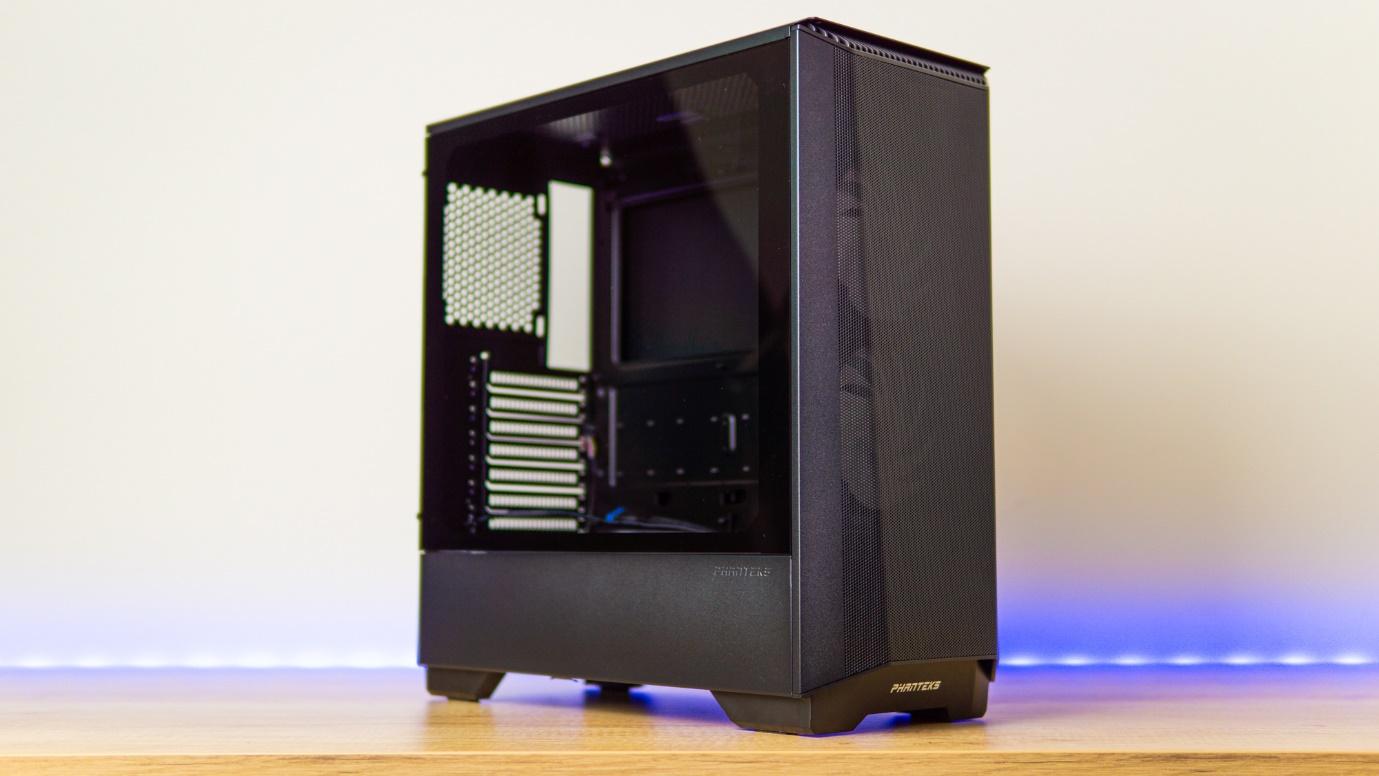
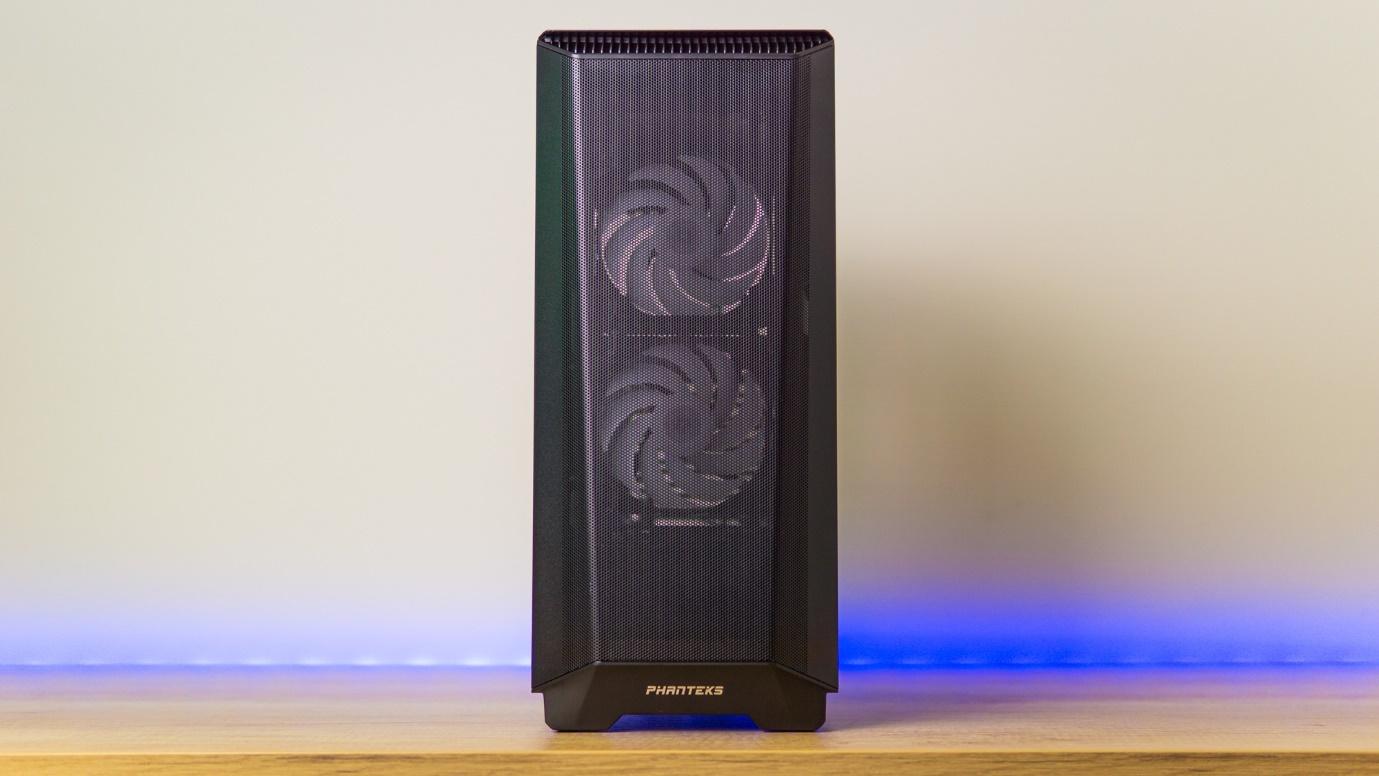
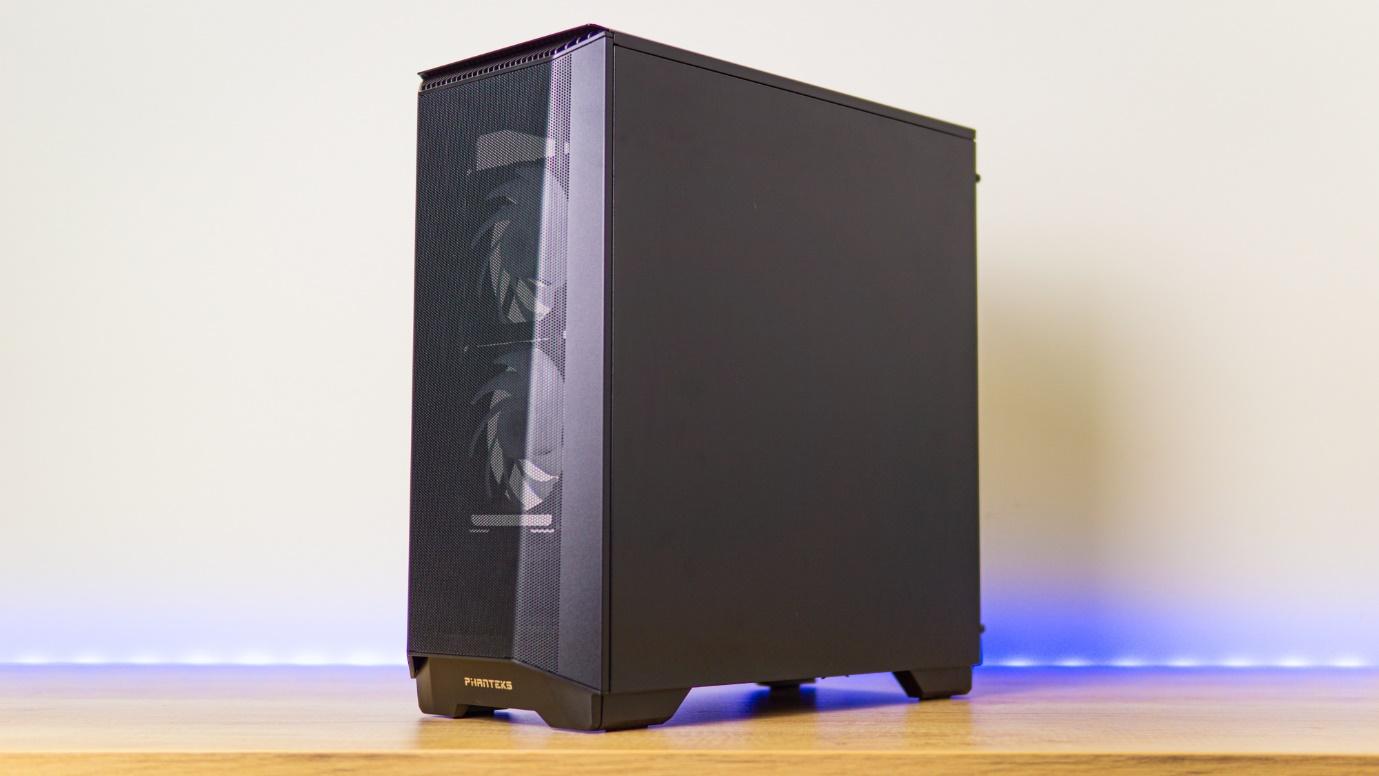
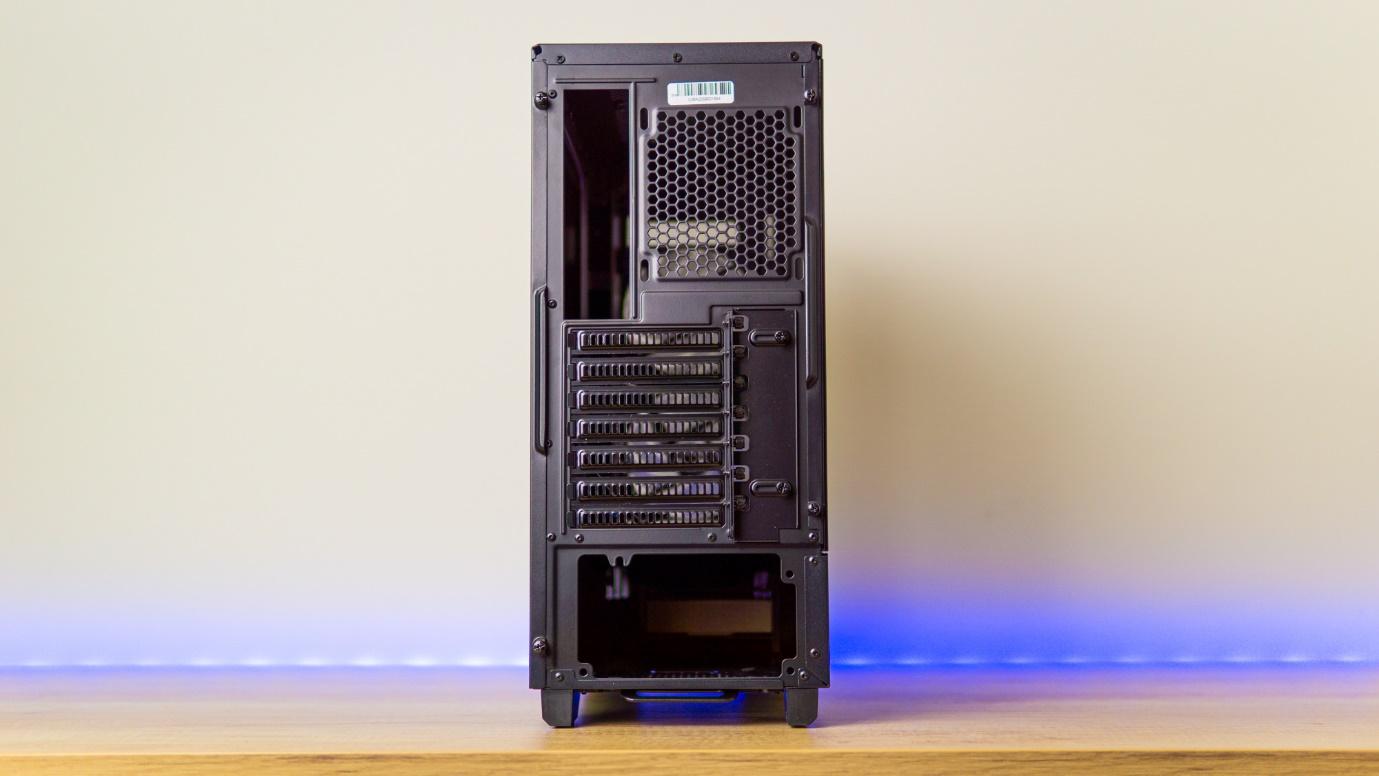
Touring around the exterior of the Phanteks P360A, it is immediately clear that this is a budget case. The sheet metal and glass panel are thin and the latter doesn’t quite line up with at the back of the case. And the PSU shroud is external, allowing for a smaller glass panel. Regardless, these shortcuts don’t take much away from the final look of the product, as the paint job on the outside is nice. The mesh intake is also well-manufactured, and as you’ll see later, there is a very nice RGB strip along the bottom of the side panel.
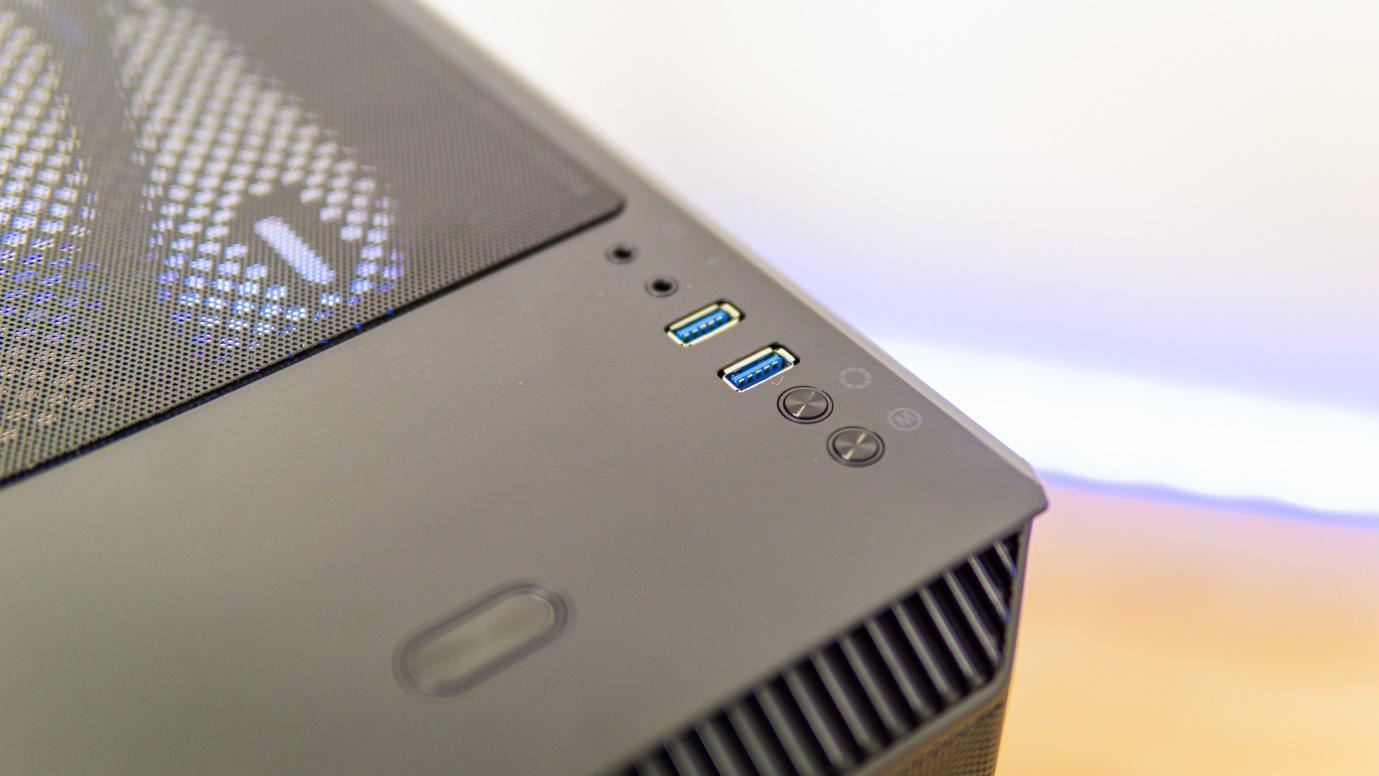
Phanteks doesn’t bother with a power LED, HDD LED or reset switches – all of that costs money and is rarely important anyway, so why bother when the funds can go to RGB instead? Front IO is covered by two USB 3.0 ports and separate headphone and mic jacks. The power button is at the center, and the two buttons you see below the USB ports are the RGB mode and RGB color selectors.
Internal Layout
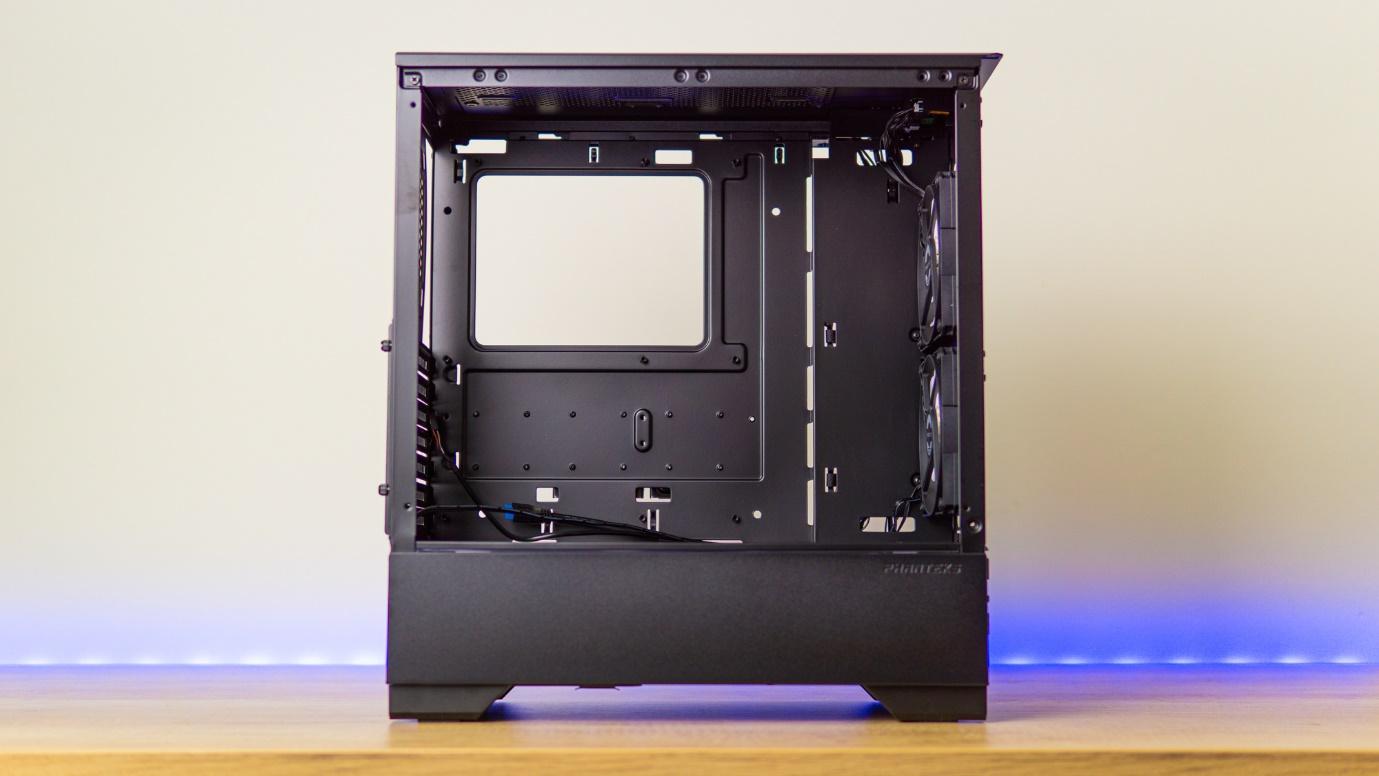
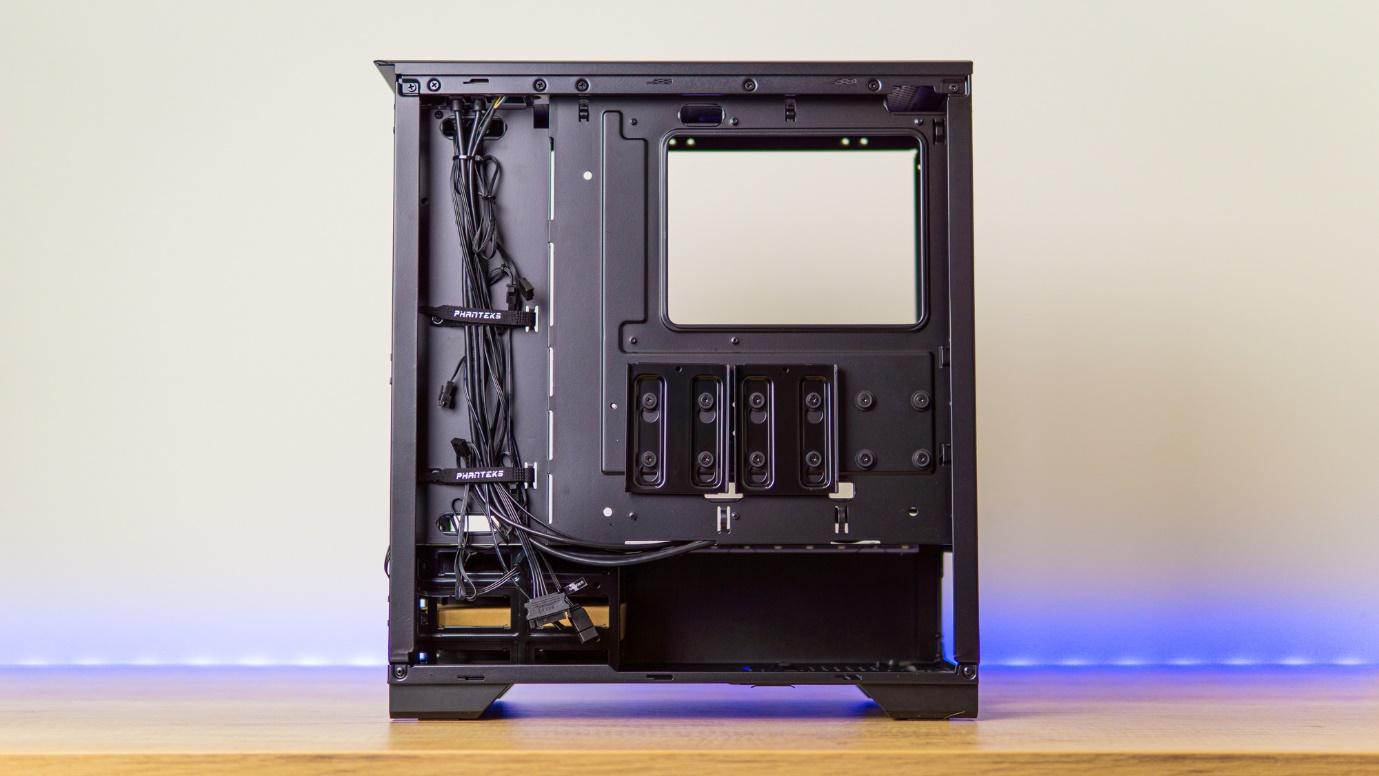
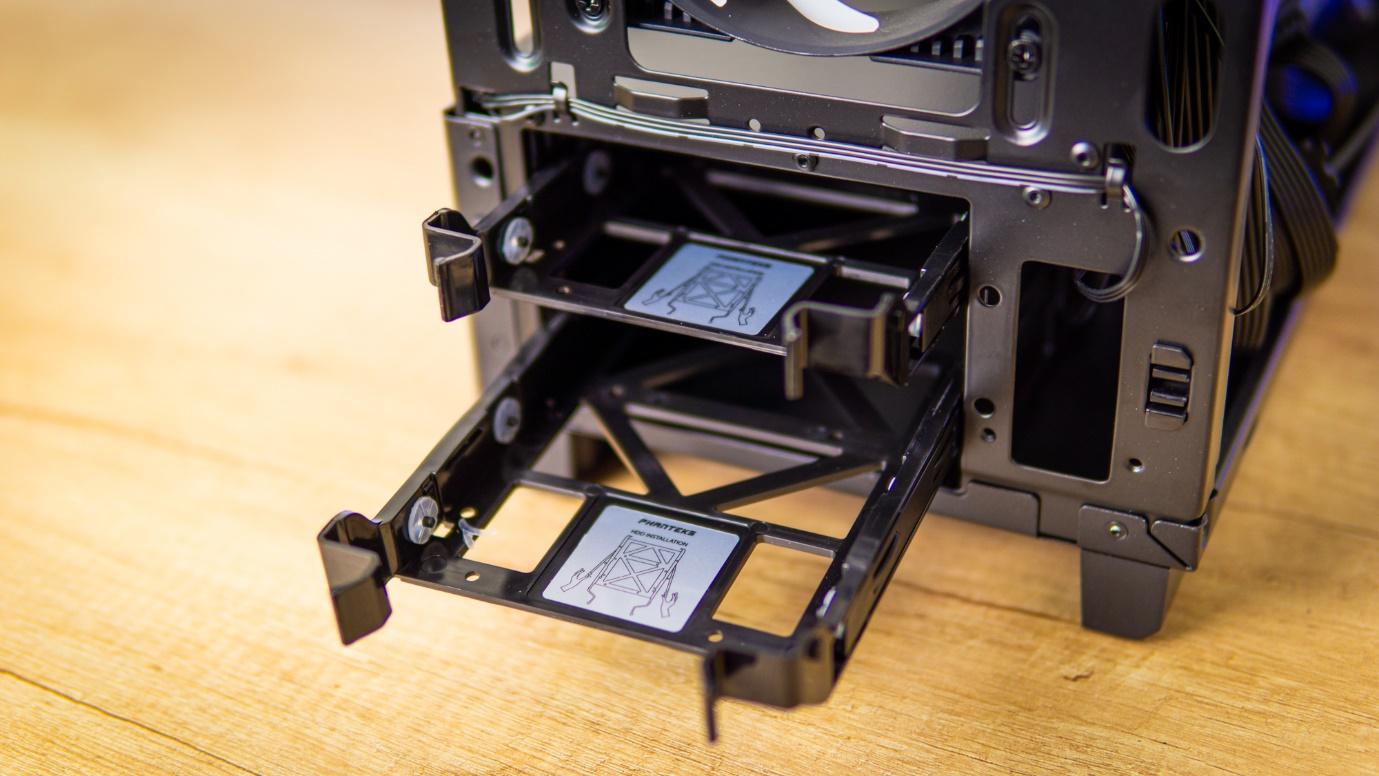
Inside the P360A there is space for up to an ATX motherboard and long graphics cards up to 400mm (15.75 inches), so you’ll be able to fit very powerful gaming systems in here. Storage options aren’t lavish, but then again that isn’t the focus of this chassis. There’s room for two 3.5-inch drives that slide in from the front, and two 2.5-inch drives behind the motherboard tray. You can buy an optional third tray to add a third 2.5-inch drive.
Get Tom's Hardware's best news and in-depth reviews, straight to your inbox.
You’ll notice that on the interior, the paint job isn’t quite as nice as the outside, but it’s nothing to be concerned about.
The connectivity for the RGB is also found inside. The fans and LED strip all connect through Phanteks’ own 3-pin headers, but a ‘standard’ header is present to connect additional RGB devices not from Phanteks, and you can opt to connect the RGB to your motherboard and override the built-in controller. But in all fairness, what’s here is quite a good controller – there’s no need to shop for a board that has an A-RGB header, which can help you save some money.
Cooling
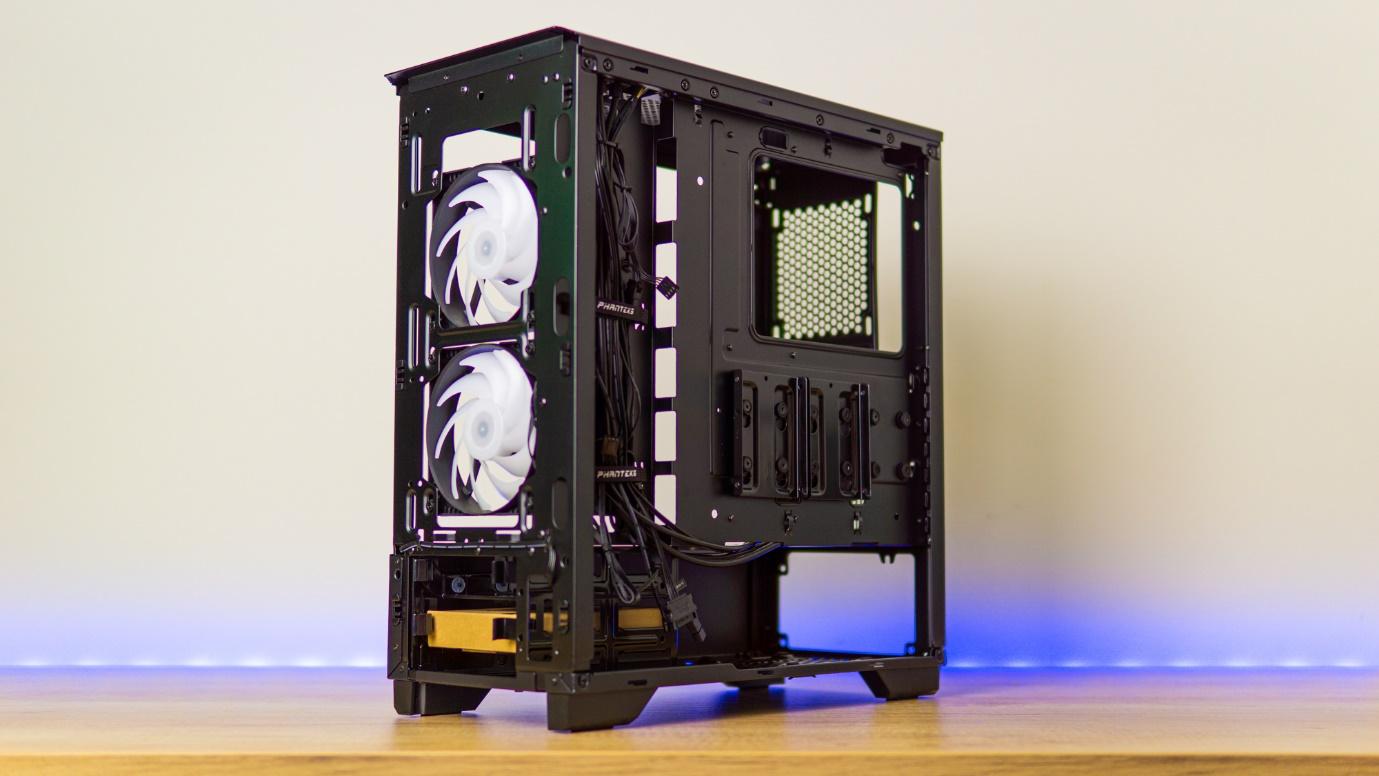
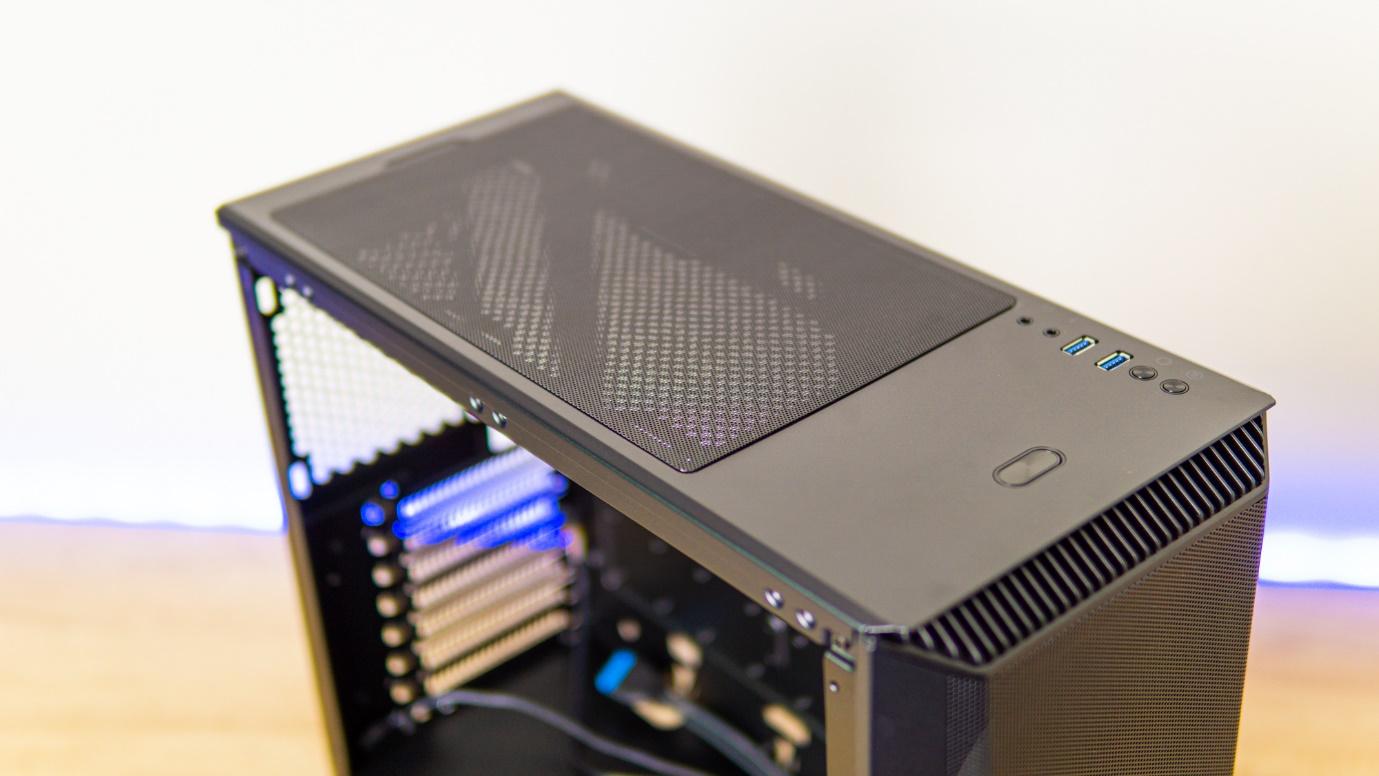
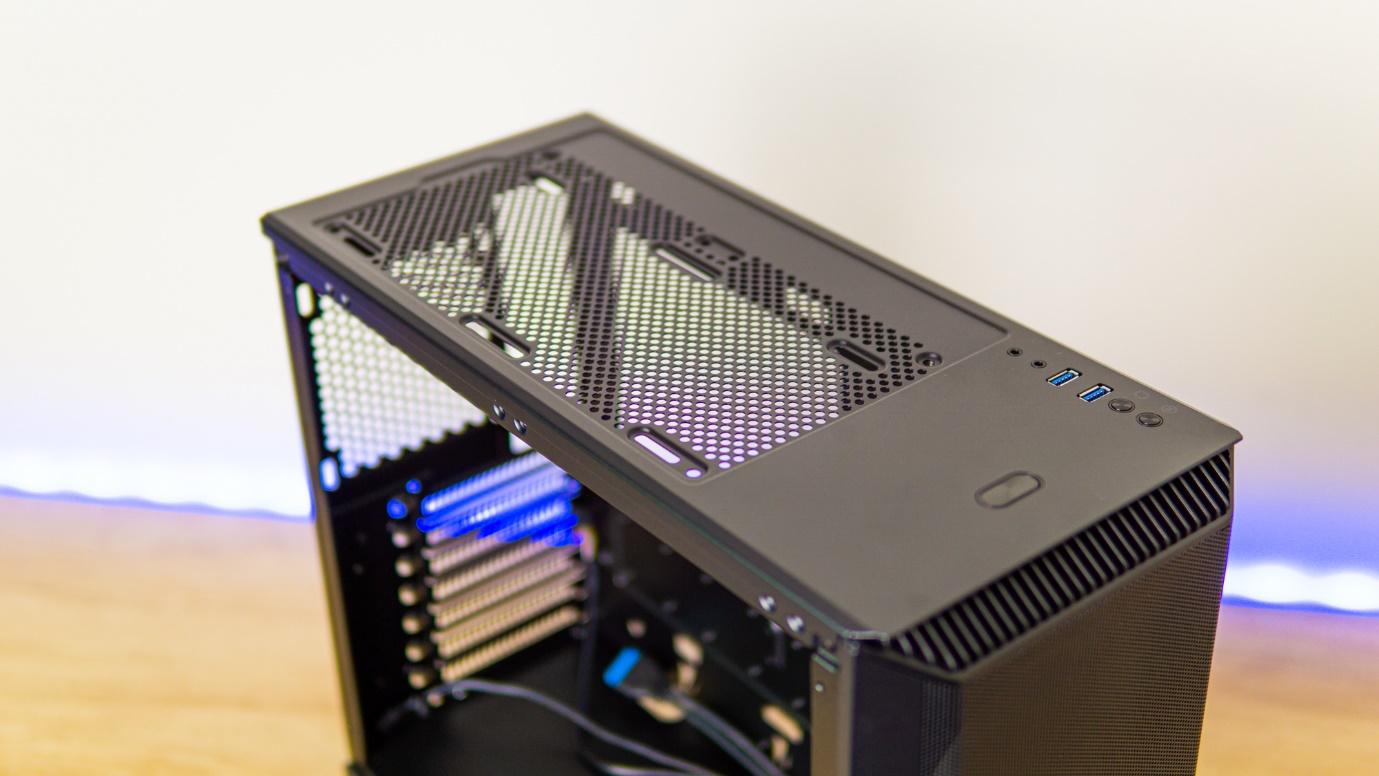
Another spot where Phanteks cut costs is in the filtration – or rather, lack thereof. Of course, the marketing lingo is all about how the front panel filters without the need of a filter, but we both know that’s to cut the cost of a real air filter. The front has a 1mm perforation, which should take care of the worst offenders, but stuff will still get through more than a dedicated filter. Of course, the lack of removable filtration will be good for cooling.
That being said, you have to evaluate these things on a per-use-case basis. If you’re like me, and you run your PC for 12+ hours a day, you obviously want to pass on the P360A because you’ll be cleaning out the interior far too often. But if you only play games on it for a couple hours a day or so, the amount of dust that accumulates in the system will be far lower, so won’t be as much of an issue. Fortunately, there is a filter at the top above the radiator exhaust to protect from falling dust and debris, which will protect the system from passive pollution. The power supply also has its own filter to spare cleanup jobs there.
However, cooling is another area where the P360A differs from the P300A. It comes with two RGB fans instead of one non-RGB spinner, and the top radiator mount supports up to 240mm radiators instead of only a 120mm unit – something many buyers may appreciate. Theoretically, the case should also be able to fit a 280mm cooler at the top, but you’ll undoubtedly run into the VRM coolers or tall memory with the vast majority of motherboards, so I’d recommend you stick with a 240mm AIO at the largest.
If you’re dead-set on a 280mm radiator though, you can mount it at the front, but I don’t see why you would want to get rid of the pretty fans that are included.
Niels Broekhuijsen is a Contributing Writer for Tom's Hardware US. He reviews cases, water cooling and pc builds.
-
g-unit1111 I've always had good luck with Phanteks. Even the cheap Phanteks cases are still better than about 90% of the junk that's in the $50 - $75 range.Reply -
wyattspoppa Reply
Can you tell me where to go to learn how to build a bargain-priced gaming PC? I'd like one with a GTX 1660 Super. I'm just an old guy, disabled dad rewarding his son for straight A's/honor roll (-;/ Thank youAdmin said:Phanteks’ P360A offers up a whole lot of RGB with a pretty solid case as a foundation… for only $65!
Phanteks P360A Review: An RGB Bargain : Read more
